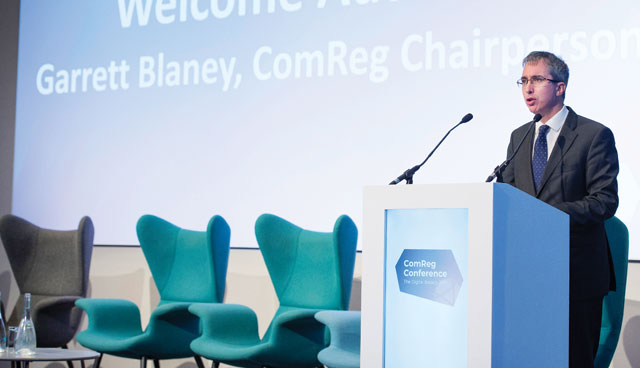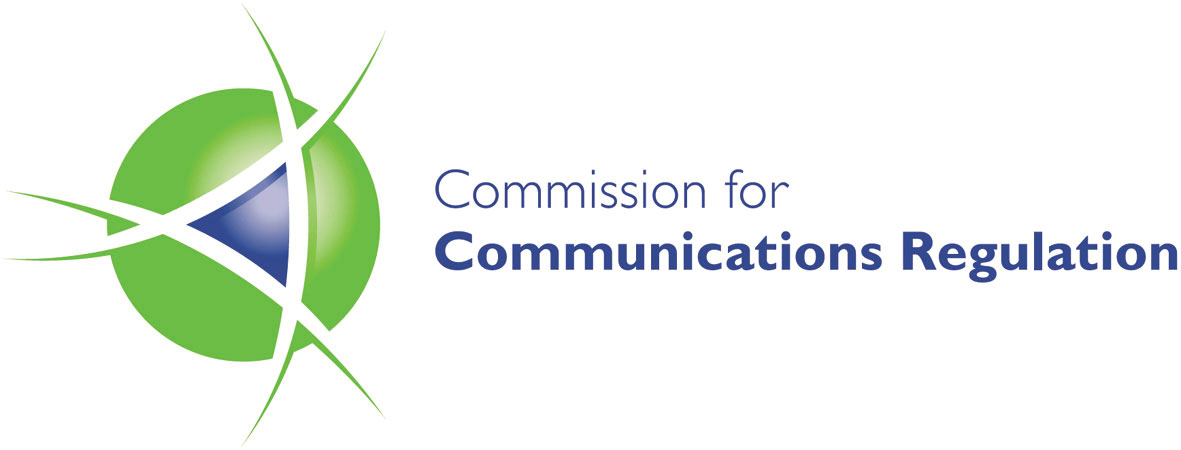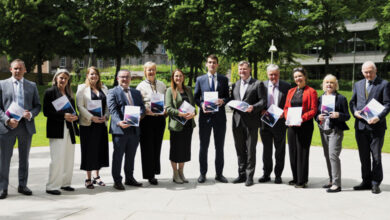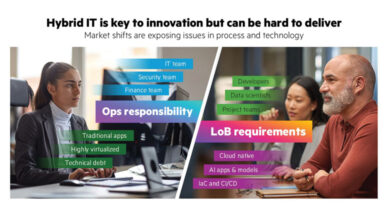Supporting the move to a digital economy

ComReg Chairperson Commissioner Garrett Blaney outlines the telecoms regulator’s response to the Covid-19 crisis, how an effective regulatory framework is the basis of future network investment and the trend towards wider digital regulation.
The Covid-19 crisis has underpinned the investment in both mobile and fixed telecoms networks, Blaney outlines. “They coped well and if the planned investment over the next five to seven years comes to fruition – and the National Broadband Plan is a key element of that – coupled with the investment plans of individual companies, we are on track for the Gigabit economy,” he indicates. This will put Ireland in a good position compared to other countries across Europe and, from a regulatory perspective, the challenge is to support this.
There is now a broader realisation that telecoms networks are a vital service, akin to other utilities such as water and electricity. It is no longer a ‘nice to have’. It is a core part of Ireland’s infrastructure. While this awareness was already growing, the Covid-19 pandemic has accelerated that and telecoms networks and digital platforms kept key parts of the economy functioning since the start of the pandemic.
“That has ramifications for us as a regulator. It is more important than ever that we as regulator make decisions that allow for network investment so everyone in Ireland can enjoy connectivity of adequate quality. There has, for example, been a steady constant improvement in the competitive matrix. Competition has been a key tool in attracting investment into the sector. We have also been investing in understanding the resilience of networks.
There is also a link to decarbonisation that hasn’t been explored enough. With increased homeworking throughout the crisis we are seeing a decarbonisation dividend. But there are also aspects that I can see, looking back on my previous experience as an energy regulator.
“With the rollout of smart meters, broadband will be a key component of new forms of smart energy use to homes. The release of the 400 MHz spectrum by ComReg has supported the development of smart energy grids and it is one clear link between the two sectors,” Blaney explains.
At the start of the Covid-19 crisis, ComReg released additional radio spectrum to boost mobile phone and broadband capacity on a temporary basis. While the crisis has slowed some radio spectrum awards across Europe, ComReg has continued preparations for its next multi band spectrum award while making some of this bandwidth available in the meantime.
“We also worked with the telecom retailers on a seven-point charter to support customers in these challenging times. We saw that with the Covid crisis everyone pulled together. Meanwhile, our own staff have been fantastic in responding to the crisis. ComReg has been in fully remote operation since mid-March, using video conferencing technology from day one,” the ComReg Chairperson details, adding: “We have had virtually no one in the office for five months now and yet we have been able to deliver on our published work plan. It shows that remote working has been a gamechanger in terms of the future working environment. Five years ago, we would not have been able to do this. The technology was not there. That is a testimony to my predecessors and the wider industry.”
Digital Regulation
The Telecom sector underpins the digital economy, but there are new areas where regulation may be needed.
“Together with other economic regulators, we have started to look at digitalisation in a broader sense. Digital, along with decarbonisation, are the two key areas within which the European Commission is working. Ireland is an important digital hub in Europe. We have the opportunity to influence that evolving regulatory framework at a European level,” Blaney suggests.
“The European Commission is now considering future digital regulation including a new Digital Services Act, new competition tools and the European approach to artificial intelligence. Ireland’s involvement in helping frame that regulation will be important in demonstrating our leadership in digital regulation. With most of the technology companies having their European headquarters in Ireland, we are at the vanguard of digital regulation for Europe. For example, the Irish Data Protection Commission effectively guards digital data protection for Europe where Ireland is the country of origin for many of the big tech companies. Having clear and consistent digital regulation will underpin future investment in Ireland as well as protect European citizens.”
New Code
At the same time, the European Electronic Communications Code (EECC) is currently being transposed into Irish law. The Code establishes an entirely new framework for telecoms regulation in Europe. It replaces a series of existing EU directives first adopted in 2002. Among the key objectives of the Code are to promote connectivity to high capacity networks, further strengthen the internal market for telecoms and to provide greater consumer protection.
“It’s important that we all deliver this by the end of 2020 as required by the European legislation and that ComReg gets additional enforcement powers to ensure compliance. Enhanced enforcement powers for ComReg has been specifically called out in the recent Programme for Government,” Blaney notes.

“There is now a broader acceptance of telecoms networks as an essential service, akin to other utilities such as water and electricity. It is no longer a ‘nice to have’. It is an essential part of Ireland’s infrastructure.”
Future
Looking to future, ComReg’s priorities will be consistent with those at the outset of 2020. Primarily, this means ensuring that investment plans have the right regulatory framework, particularly regarding any players with significant market power, while also ensuring they are making services available on a reasonable basis to all market players.
“All the core components of good regulation are now even more important as Ireland moves to full access for gigabit services in the next five to seven years. This will require significant investment and a regulatory framework to facilitate that investment. The National Broadband Plan is hugely important. It is a very significant project and we have to ensure that the regulatory elements are in place at the right time.
“The broader digital regulatory agenda will become increasingly important and closer collaboration between the various regulators is becoming a feature of the regulatory landscape. In Ireland, we have the advantage of being a small country which makes that collaboration much easier,” the ComReg Chairperson concludes.

T: +353 (0)1 804 9600
E: industry@comreg.ie
W: www.comreg.ie





